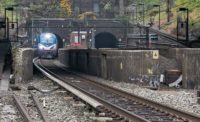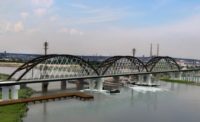While plans for a Hudson River replacement rail tunnel remain unclear, one thing is certain: The cost is climbing. Released by the Federal Railroad Administration and New Jersey Transit on July 6, a draft environmental impact statement estimates that building the two-track, New Jersey-to-Manhattan tunnel and rehabilitating the existing 106-year-old, 2.5-mile-long tubes will require nearly $13 billion, nearly double previous estimates.
Amtrak and New Jersey Transit say their Gateway Program, which comprises the tunnel and a suite of related rail infrastructure projects, is desperately needed to support the Northeast Corridor’s rapidly growing volume of passenger rail traffic, particularly given the existing tunnel’s nearly constant need for repairs and susceptibility to disruption.
According to Amtrak, approximately 450 trains pass through the existing 2.5-mile single-track tunnels each weekday.
But the Trump administration apparently does not share that urgency, as it has yet to indicate whether it will maintain the federal government’s 2015 commitment to fund half the new tunnel’s cost, with the remainder to be shared by the states of New Jersey and New York. Several federal transportation funding programs are targeted for big reductions in the president’s proposed FY 2018 budget.
However, the House Appropriations Committee’s draft transportation budget, released on July 10, limits those cuts, potentially directing as much as $900 million to Gateway projects.
On June 30, the U.S. Dept. of Transportation announced that it would permanently withdraw from the board of trustees of the multiagency Gateway Program Development Corp., created in 2015 to oversee the program. The agency claimed the program is against its “standard practice to serve in such a capacity on other local transportation projects,” adding that representatives had recused themselves twice from votes regarding applications for federal grants.
“It’s a symbolic distancing,” says Jeff Davis, a senior fellow with the Eno Center for Transportation. While USDOT won’t have a role in the board’s formal meetings, “they may still be represented in behind-the-scenes activities,” he adds.
The Hudson River tunnel’s next milestone is the scheduled March 2018 release of the final environmental impact statement. Should funds be in place, the new tunnel’s seven-year, $11.1-billion construction phase could begin in 2019. Next, work would shift to the three-year, $1.8-billion rehabilitation of the existing tubes.
Related Article: Utah State Engineers Model Fix for Oroville Dam Spillway




Post a comment to this article
Report Abusive Comment